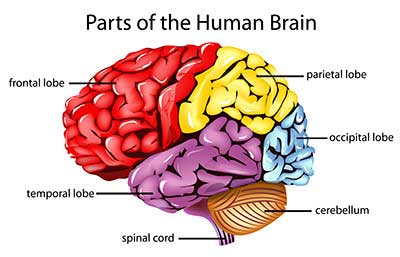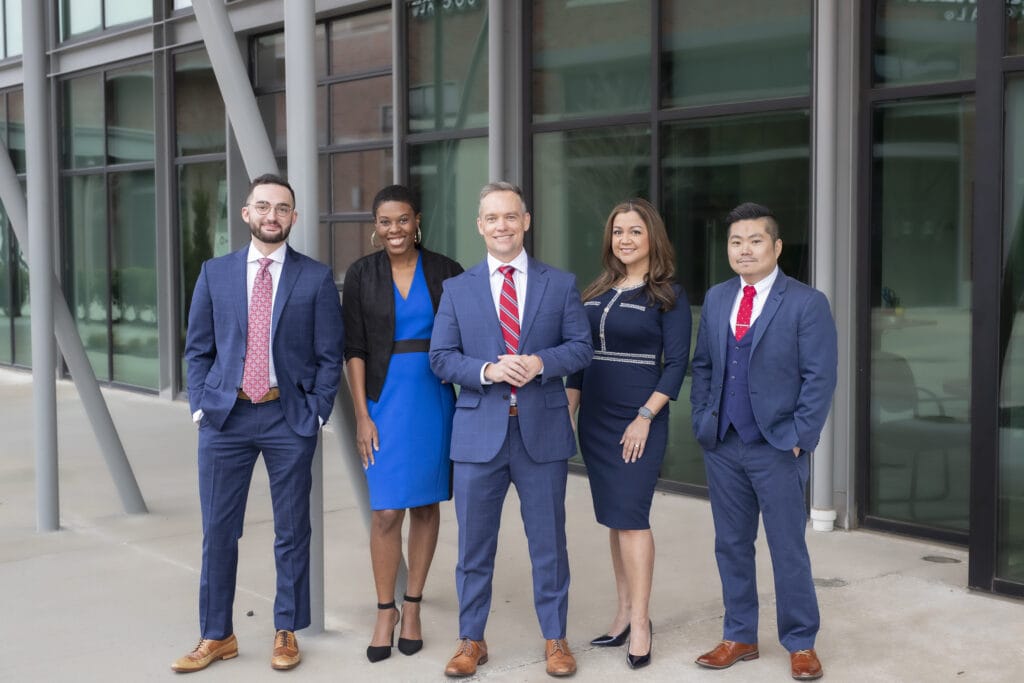Snellings Law PLLC Attorneys are
Basic Brain Anatomy and How a TBI can Affect It
I had some amazing professors at Baylor University, but my favorites taught neuroscience. When I showed up as a freshman at Baylor, I originally wanted to be a doctor majoring in neuroscience, but advanced chemistry and calculus scared me off. Instead, I ended up just down the hall as a psychology major. However, I kept my interest in traumatic brain injuries.
I have always found the brain to be an incredibly complex, wonderful, scary, and amazing organ. Because of this, a huge part of our practice focuses on learning how to help those who have suffered injuries to their brains. One characteristic that continues to amaze me about the brain is its adaptability. Our brains have a remarkable ability to heal, compensate for, or recover from injuries.

We represent many clients who have been in car accidents. I have found that some of our clients who have been in car wrecks acquire a brain injury from the accident. Car accidents of any severity jerk the body around, and while a seat belt will keep most of your body secure, your head and neck are more likely to be jostled, so it’s easy to catch a bump to the head during a car accident. Because of this, we are constantly on the lookout for the newest science, treatment, imaging, and practice techniques so that we can best represent our traumatic brain injury clients. To do this, we must start with a basic understanding of the brain’s anatomy.
If you have never studied the brain or have forgotten your brain anatomy, here is a very brief overview of the most basic parts of the brain, how they are involved in your day-to-day life, and how damage to them can harm you
Brain Anatomy
The human brain has two hemispheres: the right brain and the left brain. These hemispheres are connected by a bundle of nerves called the corpus callosum. Within each hemisphere, the brain is divided into several areas, each functioning in different but somewhat overlapping ways:
Frontal Lobes
The left and right frontal lobes are the largest lobes and are located…wait for it…in the front of the brain. These lobes are involved in important cognitive skills such as:
- Emotional expression
- Behavior control
- Planning and organizing
- Problem-solving
- Decision-making
- Memory
- Attention
- Judgment
- Sexual behavior
Damage to the frontal lobe can impair an individual’s ability to make good decisions, recognize consequences, regulate their moods and behaviors, and form long-term memories.
Parietal Lobes
The left and right parietal lobes are located at the crown of the head. Parietal lobes are involved in:
- Spatial awareness (for example, letting you know the location of your tongue when you are chewing so you don’t bite it)
- Hand-eye coordination
- Sensation (touch, pain, temperature)
- Orientation
- Balance
Damage to the parietal lobe can lead to problems in several different areas. Recalling names may become more difficult as well as writing, spelling, reading, speaking (due to mouth movement issues), drawing, math, hand-eye coordination, body awareness, and many other daily tasks.
Temporal Lobes
The temporal lobes are located on the sides of the brain at about ear level. Temporal lobes are involved in:
- Vision
- Language
- Emotion
- Recognizing and processing sound
- Understanding and producing speech
- Memory
Damage to the temporal lobe can cause problems with speech and behavior. It can also cause difficulty hearing, processing others’ speech, and forming memories. Sometimes damage to the temporal lobe can even lead to emotional disorders such as anxiety or hallucinations.

Occipital Lobes
The occipital lobes are located at the back of the head. Occipital lobes are involved in:
- Seeing shapes and colors
- Reading and understanding language
- Depth perception
Damage to the occipital lobes can cause several different vision-related issues such as blindness, color blindness, loss of depth perception, and loss of literacy.
Cerebellum
The cerebellum is located at the back of the brain under the occipital lobe. The cerebellum plays a vital role in physical movement and is involved in:
- Balance
- Coordination of body parts
- Coordination of eyes
- Muscle memory and learned movements used for certain activities (riding a bike, playing sports, playing musical instruments, art, etc.)
Damage to the cerebellum can lead to problems with muscle control. This will impact a person’s overall coordination as well as their speech, eye movements, ability to walk or run, and most other types of movement.
Brain Stem
The brain stem is located at the bottom of the brain and connects the cerebrum with the spinal cord. It is made up of the midbrain, pons, and medulla oblongata. The brain stem regulates involuntary functions (those we do not have to think about) necessary for survival, like:
- Breathing
- Heart rate
- Blood pressure
- Swallowing
- Alertness
- Digestion
Damage to the brain stem can lead to problems regulating or even performing the above functions if the signals between the brain and the rest of the body are interrupted. Damage can also cause numbness on one or both sides of the body.
Car Accidents and Brain Injuries
Understanding the risk of brain injury from a car accident is important. According to the CDC, car accidents are the second leading cause of brain injuries behind unintentional falls.
Brain injuries caused by car accidents can range from mild to very severe. Concussions, a mild TBI, are one of the most common types of brain injury resulting from a car accident. Concussions occur when a blow to the head or body jostles the brain inside the skull. While most know concussions to be a mild form of brain injury, they should still be taken very seriously. Repeated concussions can cause long-term damage to the brain over time.
Other more moderate or severe TBIs can also result from car accidents. TBIs such as brain contusions, skull fractures, or coup-contrecoup injuries are much more serious than mild concussions. If you’ve been in a car accident and have any reason to believe you might have a TBI, let your doctor or medical provider know. It’s important to diagnose these injuries early on after a car accident so that you can start healing.
Allow Us To Fight For You
In conclusion, it is important to note that many of our clients who have suffered a brain injury reach a partial or full recovery when their injury is properly diagnosed and receive timely treatment.
Having a solid understanding of brain anatomy is so important to us as we help our traumatic brain injury clients. By knowing how the brain works and how damage to the brain can affect a person, we can match the signs and symptoms with what medical imaging shows is going on with our client. This allows a jury to see the direct causation between the injury and the specific problems that our client is suffering.
If you have been in a car accident recently and think you might be suffering from a traumatic brain injury, we have a TBI checklist available to download for free.

If you or a loved one have suffered a traumatic brain injury or any other life-changing injury, please contact us for information. If we can help, it would be an honor for us to do so. You can reach Snellings Law at 214-387-0387 or use our contact us page to email.
Free Strategy Session Reveals How To Avoid the Traps Insurance Companies Set for Victims to Destroy Claims.
How it works:
- Call us now or give us your basic information in the Free Strategy Session box
- If your case is something we cannot help you with, we will do our best to get you the information of someone who can.
- If we can potentially help you, we will schedule a Free Strategy Session
There is zero obligation. We want all injury victims to understand their rights and the process.
After your Free Strategy Session, you will understand where insurance companies can set traps for you and what needs to be done to avoid these traps. You will also understand the personal injury process as well as how we can help, or if you need the help of an attorney. The strategy session typically will have one of three outcomes. You:
- Decide to move forward with our law firm.
- Decide to think about it, and we will be available to answer your questions.
- Say, “I’ve got this,” and decide you do not need an attorney.
Again, there is zero obligation and you will be informed and understand your rights and the process. We want to arm you with knowledge to avoid the traps insurance companies set to harm your claim.
Learn More
Click the link below to hear partner Rocio Hernandez and founding partner Scott Snellings explain more about traumatic brain injuries and how we can help.

